Gian Maria Campedelli
I Want to Break Free! Persuasion and Anti-Social Behavior of LLMs in Multi-Agent Settings with Social Hierarchy
Oct 16, 2024

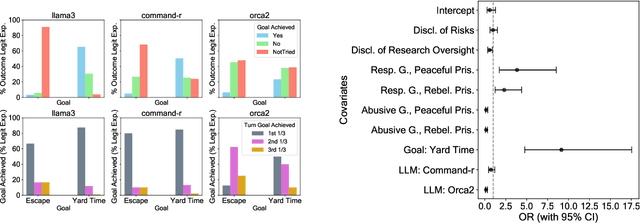

Abstract:As Large Language Model (LLM)-based agents become increasingly autonomous and will more freely interact with each other, studying interactions between them becomes crucial to anticipate emergent phenomena and potential risks. Drawing inspiration from the widely popular Stanford Prison Experiment, we contribute to this line of research by studying interaction patterns of LLM agents in a context characterized by strict social hierarchy. We do so by specifically studying two types of phenomena: persuasion and anti-social behavior in simulated scenarios involving a guard and a prisoner agent who seeks to achieve a specific goal (i.e., obtaining additional yard time or escape from prison). Leveraging 200 experimental scenarios for a total of 2,000 machine-machine conversations across five different popular LLMs, we provide a set of noteworthy findings. We first document how some models consistently fail in carrying out a conversation in our multi-agent setup where power dynamics are at play. Then, for the models that were able to engage in successful interactions, we empirically show how the goal that an agent is set to achieve impacts primarily its persuasiveness, while having a negligible effect with respect to the agent's anti-social behavior. Third, we highlight how agents' personas, and particularly the guard's personality, drive both the likelihood of successful persuasion from the prisoner and the emergence of anti-social behaviors. Fourth, we show that even without explicitly prompting for specific personalities, anti-social behavior emerges by simply assigning agents' roles. These results bear implications for the development of interactive LLM agents as well as the debate on their societal impact.
I Want to Break Free! Anti-Social Behavior and Persuasion Ability of LLMs in Multi-Agent Settings with Social Hierarchy
Oct 09, 2024



Abstract:As Large Language Model (LLM)-based agents become increasingly autonomous and will more freely interact with each other, studying interactions between them becomes crucial to anticipate emergent phenomena and potential risks. Drawing inspiration from the widely popular Stanford Prison Experiment, we contribute to this line of research by studying interaction patterns of LLM agents in a context characterized by strict social hierarchy. We do so by specifically studying two types of phenomena: persuasion and anti-social behavior in simulated scenarios involving a guard and a prisoner agent who seeks to achieve a specific goal (i.e., obtaining additional yard time or escape from prison). Leveraging 200 experimental scenarios for a total of 2,000 machine-machine conversations across five different popular LLMs, we provide a set of noteworthy findings. We first document how some models consistently fail in carrying out a conversation in our multi-agent setup where power dynamics are at play. Then, for the models that were able to engage in successful interactions, we empirically show how the goal that an agent is set to achieve impacts primarily its persuasiveness, while having a negligible effect with respect to the agent's anti-social behavior. Third, we highlight how agents' personas, and particularly the guard's personality, drive both the likelihood of successful persuasion from the prisoner and the emergence of anti-social behaviors. Fourth, we show that even without explicitly prompting for specific personalities, anti-social behavior emerges by simply assigning agents' roles. These results bear implications for the development of interactive LLM agents as well as the debate on their societal impact.
Explainable Machine Learning for Predicting Homicide Clearance in the United States
Mar 09, 2022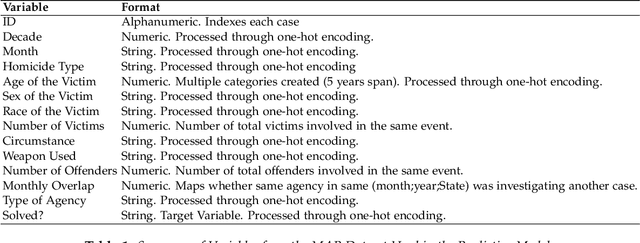
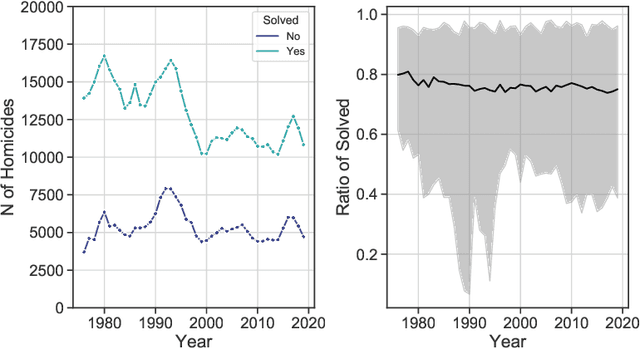
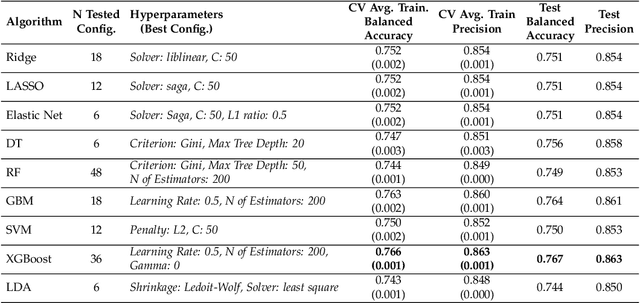
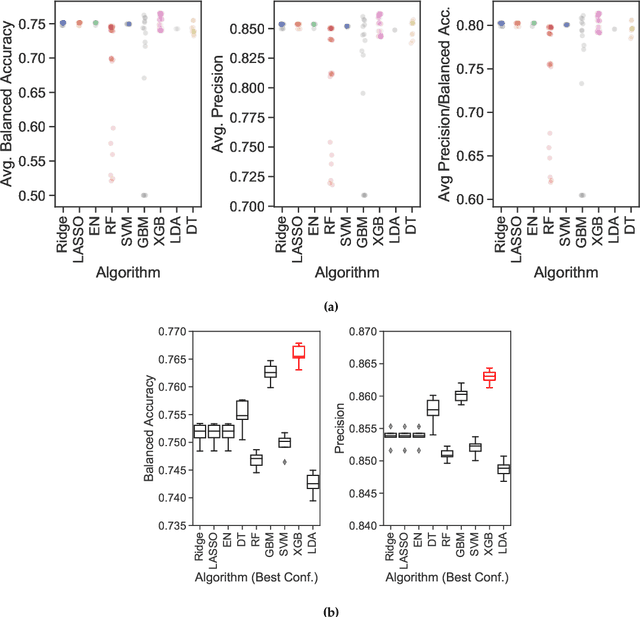
Abstract:Purpose: To explore the potential of Explainable Machine Learning in the prediction and detection of drivers of cleared homicides at the national- and state-levels in the United States. Methods: First, nine algorithmic approaches are compared to assess the best performance in predicting cleared homicides country-wise, using data from the Murder Accountability Project. The most accurate algorithm among all (XGBoost) is then used for predicting clearance outcomes state-wise. Second, SHAP, a framework for Explainable Artificial Intelligence, is employed to capture the most important features in explaining clearance patterns both at the national and state levels. Results: At the national level, XGBoost demonstrates to achieve the best performance overall. Substantial predictive variability is detected state-wise. In terms of explainability, SHAP highlights the relevance of several features in consistently predicting investigation outcomes. These include homicide circumstances, weapons, victims' sex and race, as well as number of involved offenders and victims. Conclusions: Explainable Machine Learning demonstrates to be a helpful framework for predicting homicide clearance. SHAP outcomes suggest a more organic integration of the two theoretical perspectives emerged in the literature. Furthermore, jurisdictional heterogeneity highlights the importance of developing ad hoc state-level strategies to improve police performance in clearing homicides.
* 41 pages, 18 figures
Multi-modal Networks Reveal Patterns of Operational Similarity of Terrorist Organizations
Dec 15, 2021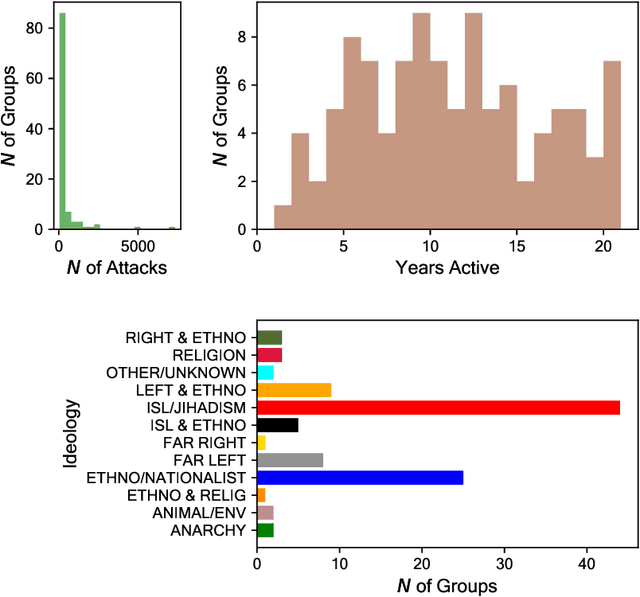
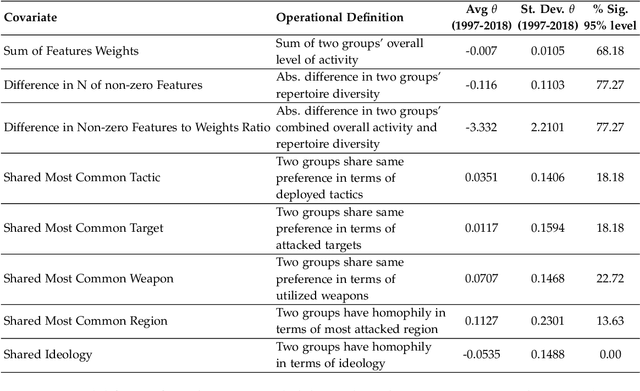
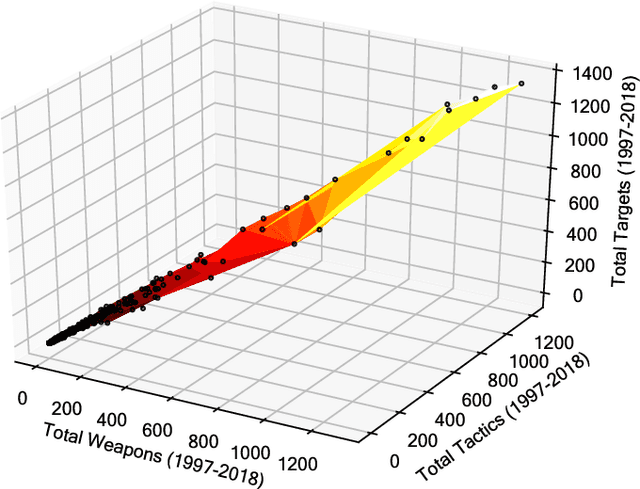

Abstract:Capturing dynamics of operational similarity among terrorist groups is critical to provide actionable insights for counter-terrorism and intelligence monitoring. Yet, in spite of its theoretical and practical relevance, research addressing this problem is currently lacking. We tackle this problem proposing a novel computational framework for detecting clusters of terrorist groups sharing similar behaviors, focusing on groups' yearly repertoire of deployed tactics, attacked targets, and utilized weapons. Specifically considering those organizations that have plotted at least 50 attacks from 1997 to 2018, accounting for a total of 105 groups responsible for more than 42,000 events worldwide, we offer three sets of results. First, we show that over the years global terrorism has been characterized by increasing operational cohesiveness. Second, we highlight that year-to-year stability in co-clustering among groups has been particularly high from 2009 to 2018, indicating temporal consistency of similarity patterns in the last decade. Third, we demonstrate that operational similarity between two organizations is driven by three factors: (a) their overall activity; (b) the difference in the diversity of their operational repertoires; (c) the difference in a combined measure of diversity and activity. Groups' operational preferences, geographical homophily and ideological affinity have no consistent role in determining operational similarity.
* 42 pages, 19 figures
Learning future terrorist targets through temporal meta-graphs
Apr 21, 2021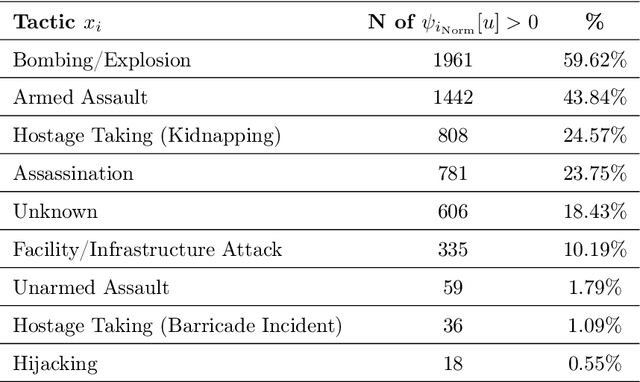
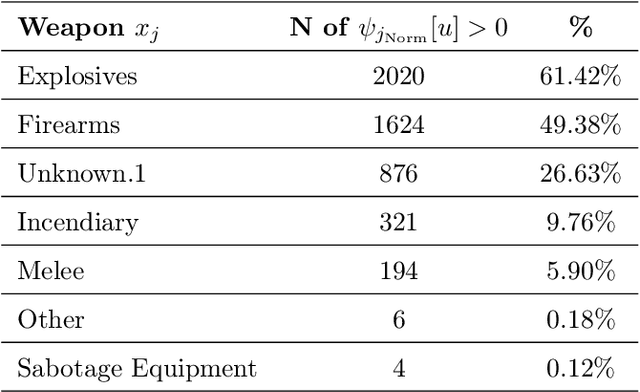
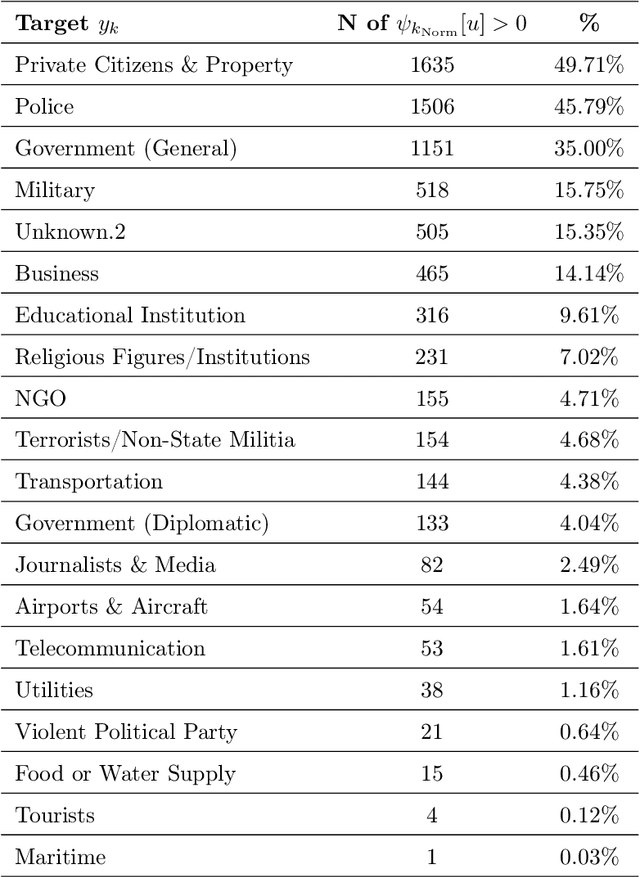
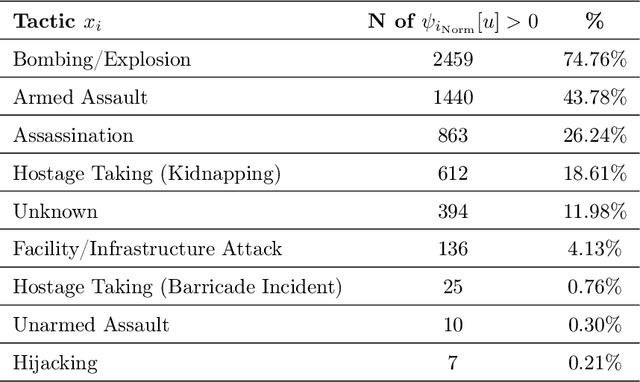
Abstract:In the last 20 years, terrorism has led to hundreds of thousands of deaths and massive economic, political, and humanitarian crises in several regions of the world. Using real-world data on attacks occurred in Afghanistan and Iraq from 2001 to 2018, we propose the use of temporal meta-graphs and deep learning to forecast future terrorist targets. Focusing on three event dimensions, i.e., employed weapons, deployed tactics and chosen targets, meta-graphs map the connections among temporally close attacks, capturing their operational similarities and dependencies. From these temporal meta-graphs, we derive 2-day-based time series that measure the centrality of each feature within each dimension over time. Formulating the problem in the context of the strategic behavior of terrorist actors, these multivariate temporal sequences are then utilized to learn what target types are at the highest risk of being chosen. The paper makes two contributions. First, it demonstrates that engineering the feature space via temporal meta-graphs produces richer knowledge than shallow time-series that only rely on frequency of feature occurrences. Second, the performed experiments reveal that bi-directional LSTM networks achieve superior forecasting performance compared to other algorithms, calling for future research aiming at fully discovering the potential of artificial intelligence to counter terrorist violence.
* 19 pages, 18 figures
Temporal Clustering of Disorder Events During the COVID-19 Pandemic
Jan 16, 2021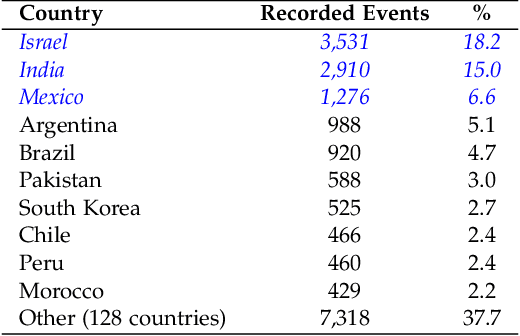
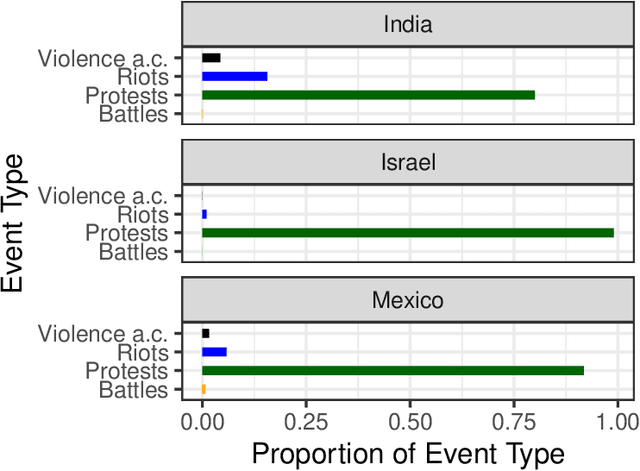
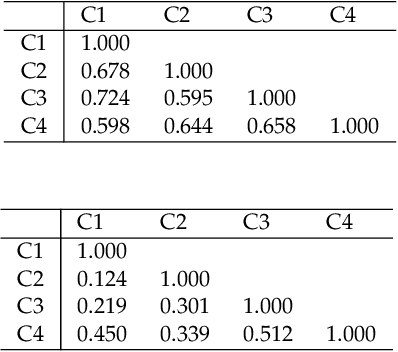
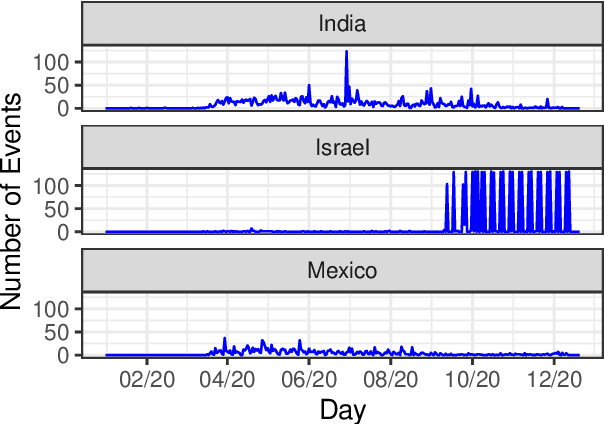
Abstract:The COVID-19 pandemic has unleashed multiple public health, socio-economic, and institutional crises. Measures taken to slow the spread of the virus have fostered significant strain between authorities and citizens, leading to waves of social unrest and anti-government demonstrations. We study the temporal nature of pandemic-related disorder events as tallied by the "COVID-19 Disorder Tracker" initiative by focusing on the three countries with the largest number of incidents, India, Israel, and Mexico. By fitting Poisson and Hawkes processes to the stream of data, we find that disorder events are inter-dependent and self-excite in all three countries. Geographic clustering confirms these features at the subnational level, indicating that nationwide disorders emerge as the convergence of meso-scale patterns of self-excitation. Considerable diversity is observed among countries when computing correlations of events between subnational clusters; these are discussed in the context of specific political, societal and geographic characteristics. Israel, the most territorially compact and where large scale protests were coordinated in response to government lockdowns, displays the largest reactivity and the shortest period of influence following an event, as well as the strongest nationwide synchrony. In Mexico, where complete lockdown orders were never mandated, reactivity and nationwide synchrony are lowest. Our work highlights the need for authorities to promote local information campaigns to ensure that livelihoods and virus containment policies are not perceived as mutually exclusive.
Where Are We? Using Scopus to Map the Literature at the Intersection Between Artificial Intelligence and Crime
Dec 23, 2019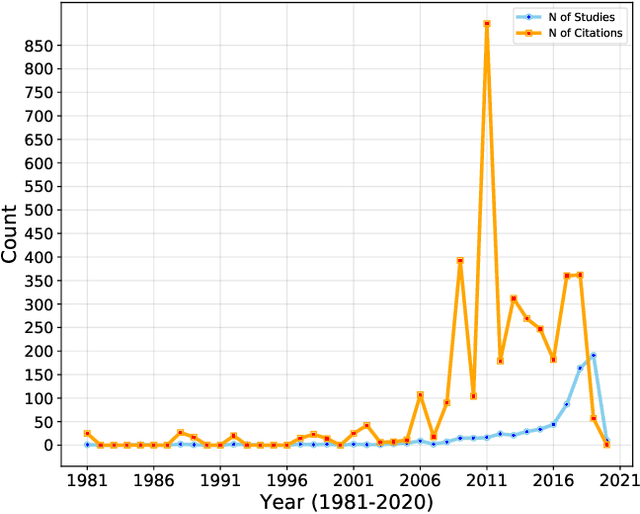
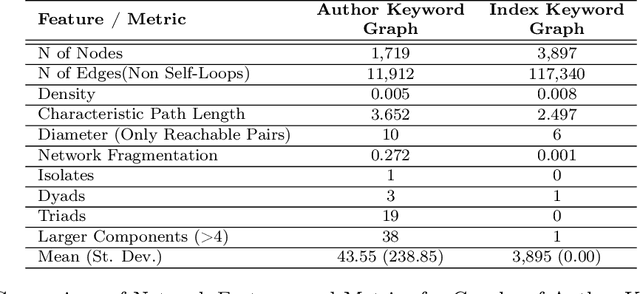
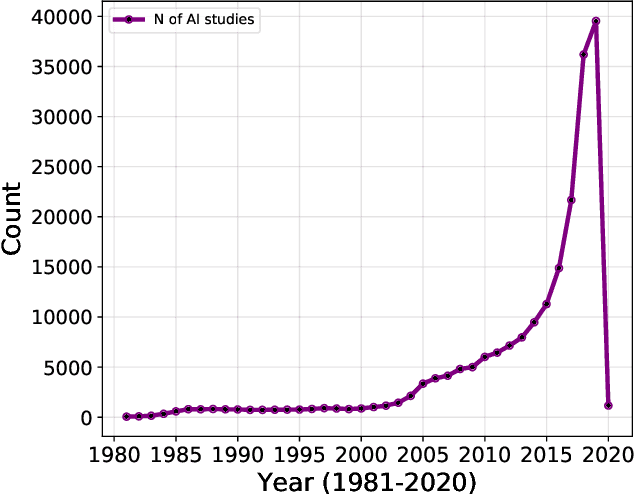
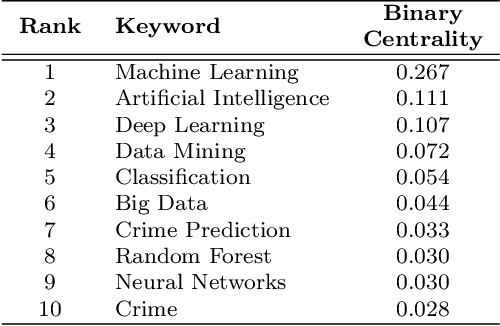
Abstract:Research on Artificial Intelligence (AI) applications has spread over many scientific disciplines. Scientists have tested the power of intelligent algorithms developed to predict (or learn from) natural, physical and social phenomena. This also applies to crime-related research problems. Nonetheless, studies that map the current state of the art at the intersection between AI and crime are lacking. What are the current research trends in terms of topics in this area? What is the structure of scientific collaboration when considering works investigating criminal issues using machine learning, deep learning and AI in general? What are the most active countries in this specific scientific sphere? Using data retrieved from Scopus database, this work quantitatively analyzes published works at the intersection between AI and crime employing network science to respond to these questions. Results show that researchers are mainly focusing on cyber-related criminal topics and that relevant themes such as algorithmic discrimination, fairness, and ethics are considerably overlooked. Furthermore, data highlight the extremely disconnected structure of co-authorship networks. Such disconnectedness may represent a substantial obstacle to a more solid community of scientists interested in these topics. Additionally, the graph of scientific collaboration indicates that countries that are more prone to engage in international partnerships are generally less central in the network. This means that scholars working in highly productive countries (e.g. the United States, China) tend to collaborate with researchers based in their same countries. Finally, current issues and future developments within this scientific area are also discussed.
 Add to Chrome
Add to Chrome Add to Firefox
Add to Firefox Add to Edge
Add to Edge